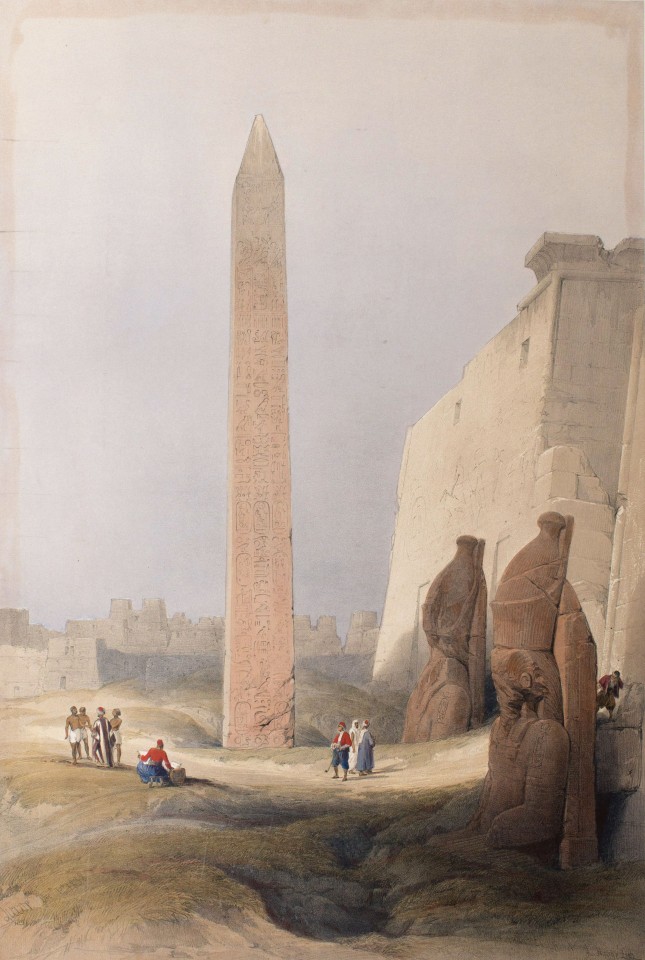A Keystone Work: Rare Books on Holy Land Given to Smith's Collection
Campus Life

Published June 30, 2015
A seven-volume set of views of the 19th-century Middle East is now part of Smith’s Mortimer Rare Book Room collection.
The set—The Holy Land, Syria, Idumea, Arabia, Egypt & Nubia—contains more than 200 remarkable hand-colored lithographs by David Roberts, a Scottish painter of landscapes and theatrical scenes. The leather-bound folios, published in 1848, are a gift from alumna Ann Stranahan ’57 and her husband, Stephen, of Perrysburg, Ohio.
Martin Antonetti, curator of rare books and director of the book studies concentration at Smith, said the Roberts volumes are “one of the greatest illustrated books of the 19th century,” offering “a rich trove of social and archaeological data.”
Roberts was fascinated by the eastern Mediterranean region then known as the Levant—a preoccupation shared by numerous Europeans and British subjects of the Victorian era. Like many artists of his time, Roberts went on extended sketching tours of this “exotic” part of the world, Antonetti said, swept up in what was known as “Egyptomania.”

Roberts’ drawings, produced between 1842 and 1848, capture striking views of ancient monuments, as well as rare glimpses of ordinary street life in Cairo, Alexandria and Jerusalem.
Published just before photography became widespread, the lithographic images are “useful not only for showing the architecture, but also how people interacted with the landscape” of the Middle East, Antonetti said. (A full description of the volumes is included in a recent issue of the Friends of the Smith College Libraries newsletter.)
He noted that the gift of the Roberts books “dovetails nicely” with existing travel collections housed in the Mortimer Rare Book Room in Neilson Library. Those include the Heffelfinger Collection of 19th- century travelogues to Greece and the Levant and the Gundersheimer Italian Travel Collection.
Roberts’ Holy Land represents, “a keystone work, a monumental work that significantly enriches our collection of travel books,” Antonetti said.
Antonetti emphasized the value of the set for Smith students, who will have full access to the rare volumes. Through projects, presentations and research, students will learn “how to understand and interpret the original documents themselves, giving them the unmediated experience of literary and cultural artifacts from the past,” Antonetti said.
Justin Cammy, associate professor of Jewish studies, said he is looking forward to using the Roberts books in his interdisciplinary course, Jerusalem Through the Ages, in which students learn about Jerusalem as a sacred city—and a contested political site.
Cammy said he will compare images in The Holy Landvolumes with the history of mapping Jerusalem to help students understand “how Jerusalem was constructed in the European Christian imagination.”
By giving students a sense of what the city was like before it grew beyond its medieval walls, “the Roberts materials allow students to measure the ways in which borders are not only political lines, but aesthetic constructs,” Cammy said.
The Mortimer Rare Book Room, located on the third floor of Neilson Library, contains more than 45,000 volumes. For information on summer hours, call (413) 585-2906.
Martin Antonetti, curator of rare books at Smith, displays one of seven volumes of “The Holy Land,” a rare set of volumes an alumna recently gave to the collection.